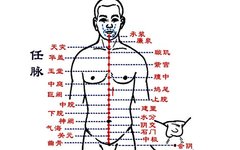
Click the above 🍁Ai Shang Kang Academy🍁 to follow us
1. Ren Mai (Ren Meridian)
Located within the body, it surrounds the female uterus and soft tissue areas, rising vertically through the Shenque (神阙) point at the navel to the abdominal cavity, reaching the throat, and connecting around the lips on the face.
The Ren Mai is known as the sea of Yin meridians, connecting the three Yin meridians of the hands and feet, which are the six primary Yin channels: Heart Meridian (心经), Pericardium Meridian (心包经), Liver Meridian (肝经), Lung Meridian (肺经), Spleen Meridian (脾经), and Kidney Meridian (腎经). The Ren Mai circulates throughout the body, connecting the five internal organs.
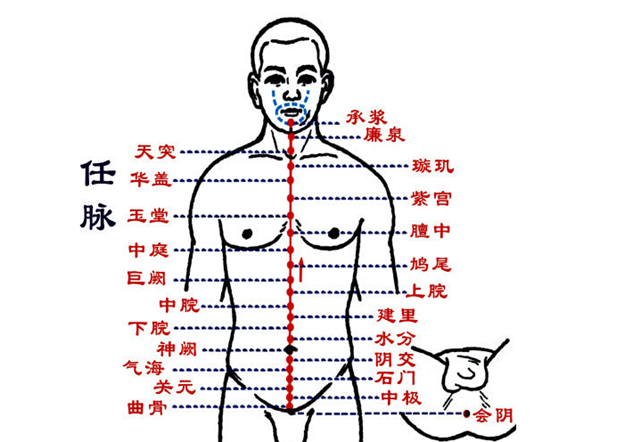
When a person suffers from Qi and blood deficiency, or when the Ren Mai is obstructed or contaminated with toxins, it can lead to a gradual decline in the function of the five internal organs: initially presenting as arrhythmia, chest tightness, shortness of breath, and over time, heart issues may develop.
Individuals with excess heart fire may develop red spots and ulcers on the tip of the tongue; those under psychological stress may experience acne between the eyebrows, affecting liver function, leading to symptoms such as blurred vision, dryness, itchiness, and presbyopia; individuals with liver inflammation may develop spots around the eyes; those with liver Yang deficiency may have bulging eyes, while those with liver Yin deficiency may have sunken eyes.

Thus, when you experience any discomfort in your eyes, it indicates that liver function is beginning to decline and needs to be regulated.
When spleen function is affected, the skin loses elasticity, and in severe cases, it can lead to organ prolapse and functional decline. Individuals with reduced spleen function may experience gastrointestinal disturbances, leading to a preference for cold foods, which can cause cold in the uterus.
Prolonged cold in the uterus can result in very light menstrual flow, occasional dysmenorrhea, and dark blood during menstruation, with the person’s lips appearing purplish.
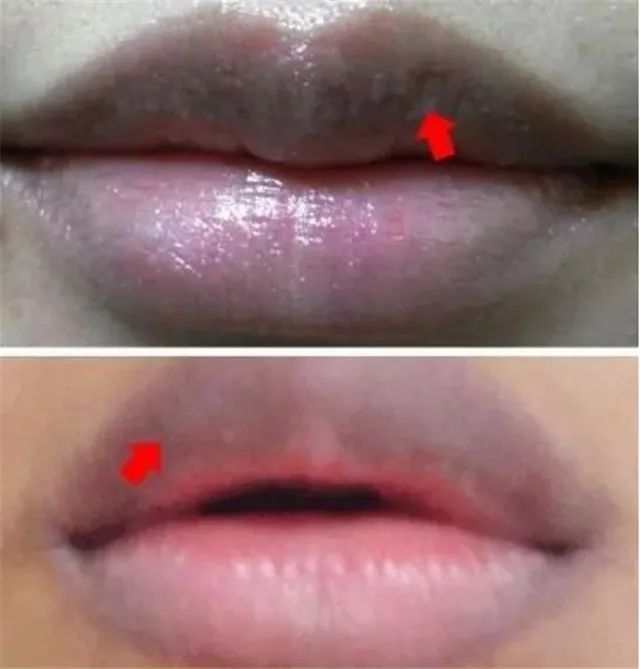
When lung function is affected, the individual may develop pharyngitis, rhinitis, sinusitis, or allergic rhinitis; those with lung inflammation may develop spots on the forehead, and inflammation-related asthma and dry cough can lead to decreased immunity, making one prone to colds.
Women with cervical erosion may develop spots around the lips; those with cold in the uterus may have acne on the chin; individuals with long-term constipation may develop spots on both cheeks; those with endocrine disorders may have acne around the hairline.
This series of uncomfortable symptoms indicates a decline in the function of our five internal organs, all related to the Ren Mai.

2. Chong Mai (Chong Meridian)
Located within the body, it radiates to both sides, surrounding the female ovaries and soft tissue areas, ascending from both sides to the breasts, reaching the throat, encircling the lips, extending to the cheeks, and to the top of the head. The Chong Mai governs the circulation of Qi and blood throughout the body, known as the sea of blood.
When the Chong Mai is obstructed, and Qi and blood circulation is poor, the individual may experience cold hands and feet, fear of cold in middle age, and numbness and stiffness in the extremities in old age. Some may develop cracked heels and thick calluses, leading to arthritis over time, causing discomfort not only in the legs but throughout the body, along with poor nutrient absorption, resulting in a vicious cycle of calcium deficiency, lower back pain, leg weakness, and cramps. Symptoms of discomfort may include restlessness and insomnia.
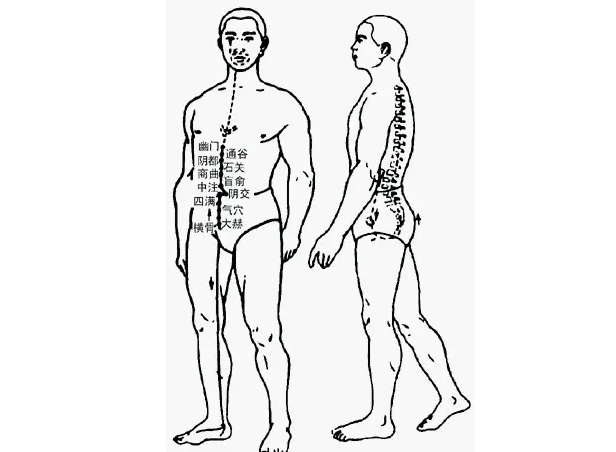
Women who have undergone confinement or experienced cold after an abortion may later develop migraines, and those with thick blood may experience dizziness, with severe cases leading to hemiplegia or cerebral hemorrhage. If combined with anger, it may lead to cerebral infarction, all related to blood viscosity. Declining ovarian function and uneven estrogen secretion can lead to lobular hyperplasia of the breast.
Those who are prone to anger may develop fibrocystic breast disease; those who frequently take contraceptive pills may later develop breast cancer, which can progress to uterine or ovarian cancer if not treated.
Some women may experience breast tenderness with no apparent issues upon examination; caution is advised, as this may indicate problems in the uterus and ovaries, with Qi and blood flow along the Chong Mai being affected, leading to blockages at the base of the breast.

Women with ovarian inflammation or cysts may develop spots on their foreheads, indicating that the face is a mirror of a woman’s health, reflecting the condition of the five internal organs, uterus, and ovaries.
Yellowing skin may indicate anemia, and spots in corresponding areas may signal issues, as inflammation and toxins accumulate within the body, making external treatments ineffective.
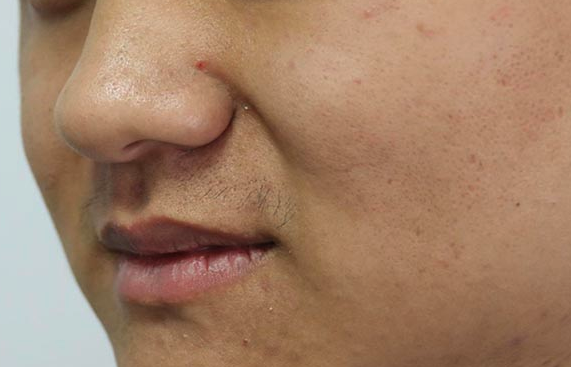
3. Du Mai (Du Meridian)
The Du Mai is known as the sea of Yang meridians, connecting the three Yang meridians of the hands and feet, which are the six primary Yang channels: Gallbladder Meridian (胆经), Stomach Meridian (胃经), Small Intestine Meridian (小肠经), Large Intestine Meridian (大肠经), Bladder Meridian (膀胱经), and San Jiao Meridian (三焦经).
The Du Mai runs through the body, connecting the six internal organs and circulating throughout. When the Du Mai is obstructed, and Qi and blood circulation is poor, it can lead to a gradual decline in the function of the six internal organs.
For instance, individuals with declining gallbladder function may experience back pain; those with gallbladder inflammation lasting over two years may develop spots at the inner corners of the eyes and along the nose; individuals with kidney function decline may experience pain on both sides of the lower back, including those with chronic nephritis.

Kidney Yin deficiency can affect bladder detoxification, leading to an inability to fully eliminate toxins (i.e., urine), which over time can corrode the bladder, causing urethritis, cystitis, severe urinary frequency, urgency, and eventually urinary incontinence.
Kidney Yang deficiency can lead to unformed stools; if heart fire or lung fire is excessive, it can result in dry and hard stools, leading to hemorrhoids, with severe cases causing bluish blood vessels in the fingers. When blood is toxic, it is akin to drinking contaminated water, leading to a decline in organ function.
Obstruction of the Du Mai and poor Qi and blood circulation can lead to stiffness in the cervical spine, which over time can develop into cervical pain, and in severe cases, shoulder periarthritis, with occasional headaches and dizziness.
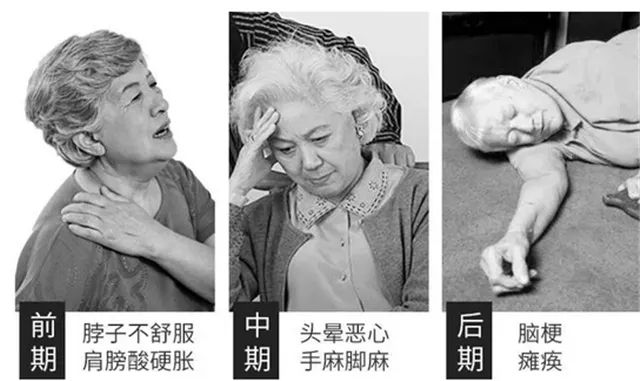
The Du Mai plays a role in conduction; women with cervical spondylosis or shoulder periarthritis may experience a lack of sexual desire for extended periods.
It is essential to learn to protect and care for oneself with knowledge. When we love ourselves, others will love us too, indicating that a series of symptoms and the decline of our six internal organs’ functions are related to the obstruction of the Du Mai.
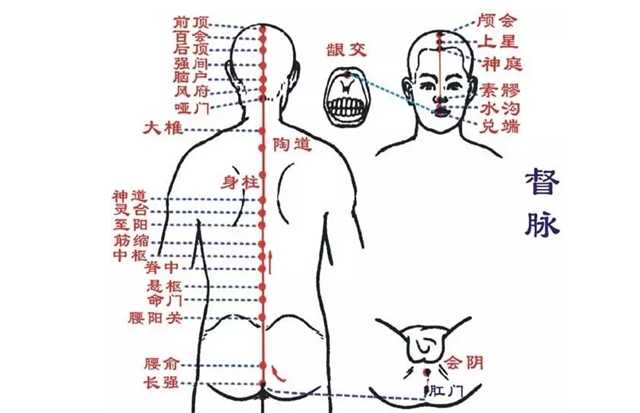
4. Dai Mai (Dai Meridian)
Located 1.8 inches below the navel, it encircles the waist like a wide belt, constraining the Ren, Chong, and Du meridians above, and connecting to the female reproductive system with four pairs of ligaments suspended in the pelvic cavity.
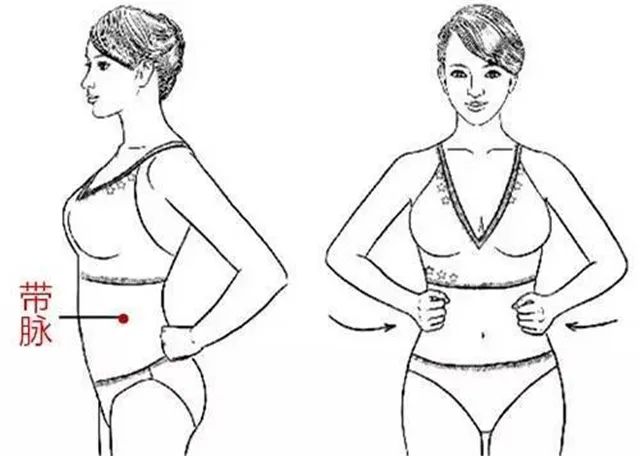
The Dai Mai is fibrous and elastic, circulating the estrogen secreted by the ovaries throughout the body and participating in fat metabolism. When the Dai Mai is obstructed and ovarian function declines, a woman’s body shape may change.
Click to follow for timely updates on quality articles
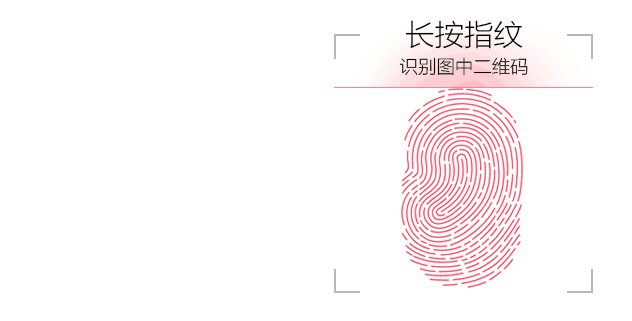

© Disclaimer: The materials and images in this article are sourced from the internet and other platforms. If there is any infringement, please contact the editor for removal. © Content Disclaimer: The various treatment methods in this article are for reference and communication only and may not be suitable for all individuals. It is recommended that patients seek timely medical attention.

Thank you for watching!
Every good article needs your encouragement; please give the editor a thumbs up

Click to share

Click to save

Click to like

Click to view

